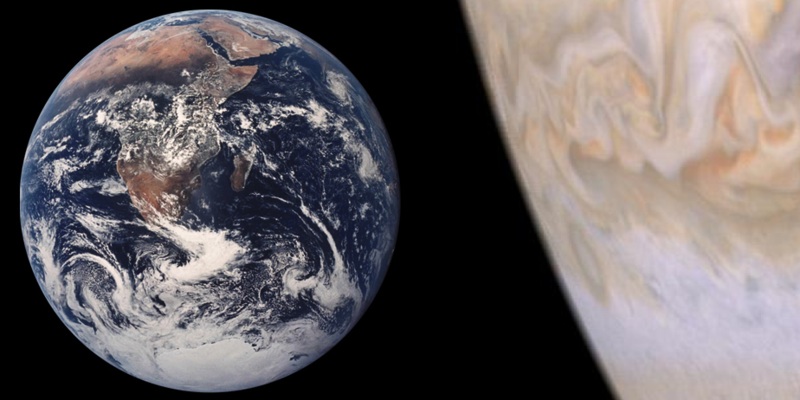No matter how you measure it, Jupiter is a larger than life planet. The size of Jupiter can be measured in four ways: mass, diameter, volume, and surface area. The mass of Jupiter is 1.9 x 1027 kg. It has an equatorial diameter of 143,000 km. The Jovian volume is 1.43 x 1015km3. The total surface area of Jupiter is 6.22 x 1010km2.
Jupiter’s mass is 318 times that of Earth’s and around 2.5 times that of the rest of the Solar System combined. Jupiter may be the most massive planet in our Solar System, but it would need another 50-80 times its current mass in order to begin fusing its hydrogen into helium and become a star. The planet’s diameter is 11.2 times larger than Earth’s. Jupiter’s volume is 1321 times larger than Earth’s and it’s surface area is 122 times that of Earth’s.
While the size of Jupiter makes it seem like the largest possible planet, it is not. TrES-4 is estimated to be 70% larger than Jupiter, but it is less massive and has a lower density. That means that it is, well…fluffy. It’s density is so low that it would float on water. The planet is located about 1,400 light-years away, and orbits its host star every 3.5 days. It orbits 7.2 million km from its star, reaching a temperature of 1,600 Kelvin. The discovery of TrES-4 was made by astronomers working with the Trans-atlantic Exoplanet Survey. To capture transiting planets, the network of telescopes take wide-field timed exposures of clear skies on as many nights as possible. Astronomers then measure the amount of light coming from every single star in the field to detect if any have changed in brightness. In the case of TrES-4, it dims the amount of light received by the star by about 1%. Scientists are trying to figure out how a planet with so little mass could get so large. ”TrES-4 appears to be something of a theoretical problem,” said Edward Dunham, Lowell Observatory Instrument Scientist. ”It is larger relative to its mass than current models of superheated giant planets can presently explain. Problems are good, though, since we learn new things by solving them.”
Jupiter’s size is amazing, but as we expand our knowledge of the Universe, we are finding that it is not nearly the largest possible planet. As TrES-4 has demonstrated, there are planets out there that defy our current understanding.
Here’s an article from Universe Today about how big planets can get, and another about a star that’s the size of Jupiter.
Here’s all the information you could want about Jupiter from Wikipedia, and more general Jupiter information from Nine Planets.
We’ve also recorded an entire show just on Jupiter for Astronomy Cast. Listen to it here, Episode 56: Jupiter, and Episode 57: Jupiter’s Moons.
Sources:
NASA
http://www.lowell.edu/


that was the best information ever!
🙂